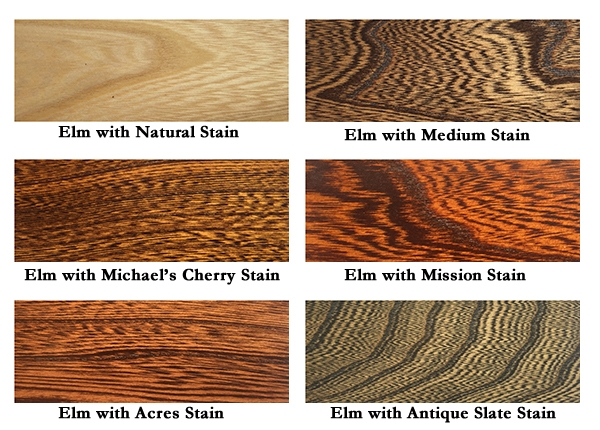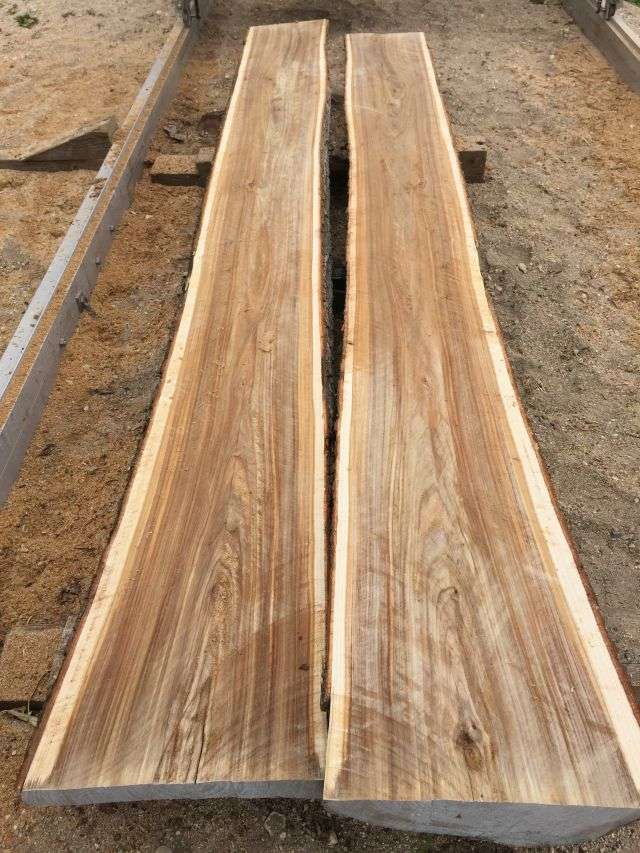Looking to dive into the world of woodworking? Wondering if elm is a good choice for your projects? Well, you’ve come to the right place! Today, we’ll explore the question “Is elm good for woodworking?” and uncover all the ins and outs of this versatile wood.
When it comes to woodworking, choosing the right wood is essential. And elm has certainly made its mark in the woodworking community. But what makes elm stand out? Is it durable? Does it have a beautiful grain pattern? Hang tight, my curious friend, as we answer all your burning questions.
So, grab your tools and let’s embark on a woodworking adventure with elm as our trusty companion. By the end of this guide, you’ll have all the knowledge you need to decide if elm is indeed a good fit for your woodworking projects. Let’s get started, shall we?
Elm is an excellent choice for woodworking projects. Its beautiful grain pattern and durability make it ideal for furniture, cabinets, and flooring. Elm is resistant to splitting and has good shock resistance, making it perfect for chairs and other items that need to withstand frequent use. It also takes stains and finishes well, allowing you to achieve a polished, professional look. While it may be slightly more difficult to work with than some other woods, the results are well worth the effort.

Is Elm Good for Woodworking? Exploring the Benefits and Uses
Woodworking is a popular craft that requires the use of various types of wood. One wood that often piques the interest of woodworkers is elm. Known for its durability and unique grain patterns, elm can be an excellent choice for your woodworking projects. In this article, we will discuss the qualities of elm, its benefits in woodworking, and some tips for working with this versatile wood.
1. The Beauty of Elm Wood
Elm wood is highly sought after for its stunning appearance. It has a distinctive grain pattern that can vary from straight to wavy or even interlocking. This unique grain, paired with a range of colors from light brown to reddish-brown, gives elm wood a natural beauty that stands out in any project.
One of the appealing characteristics of elm wood is its ability to display a variety of figures. These figures include cathedral patterns, curly grain, and fiddleback patterns, which add depth and interest to the finished piece. Elm wood also has a fine texture that allows for smooth finishes, making it aesthetically pleasing for both rustic and modern designs.
The Benefits of Elm Wood’s Qualities
Elm wood possesses several qualities that make it highly desirable for woodworking projects. Its high density and resistance to splitting and cracking make it a durable choice for furniture, cabinetry, and flooring. Elm wood is also elastic, allowing it to withstand the stresses of use without losing its shape.
Another notable benefit of elm wood is its resistance to decay and insect damage. This makes it an excellent choice for outdoor furniture or other projects exposed to the elements. Elm wood’s natural resistance to moisture also makes it suitable for use in humid environments, making it an ideal choice for kitchen countertops or cutting boards.
Tips for Working with Elm Wood
When working with elm wood, it’s important to keep a few tips in mind to ensure the best results. Due to its density and hardness, elm wood can be more difficult to work with than softer woods. It is recommended to use sharp tools and take your time when cutting or shaping elm wood.
To prevent tear-out or splintering, it is advisable to use a low cutting angle and make shallow cuts when planing or jointing elm wood. Additionally, it’s crucial to avoid high-speed cutting, as it can cause burning or overheating of the wood. Taking these precautions will help you achieve clean cuts and avoid any unnecessary damage to your workpiece.
In conclusion, elm wood offers a combination of beauty, durability, and resistance that makes it an excellent choice for woodworking projects. Its unique grain patterns and colors make it visually appealing, while its strength and resistance to decay make it a reliable option for furniture and outdoor installations. By following some simple tips when working with elm wood, you can ensure the best results and create stunning pieces that will endure for years to come. So, whether you are a beginner or an experienced woodworker, consider exploring the possibilities of working with elm wood in your next project.
Key Takeaways: Is Elm Good for Woodworking?
- Elm wood is ideal for woodworking projects due to its durability and strength.
- It has a beautiful grain pattern that adds a unique aesthetic to furniture and other creations.
- Elm is easy to work with, making it suitable for beginners and experienced woodworkers alike.
- It is resistant to decay and insect infestation, making it a long-lasting choice for outdoor projects.
- Elm wood can be used for various woodworking applications, including furniture, cabinetry, and flooring.
Frequently Asked Questions
Are you curious about using elm for woodworking? We’ve got you covered! Check out these commonly asked questions:
1. What makes elm a good wood for woodworking?
Elm is renowned for its versatility and durability, making it an excellent choice for woodworking projects. Its strength and resistance to splitting make it ideal for furniture, cabinets, and flooring. Elm is also known for its distinct grain patterns and beautiful color variations, which adds visual interest to finished pieces.
Furthermore, elm is relatively easy to work with using both hand tools and machinery. It’s forgiving when it comes to nails and screws, and it takes stains and finishes well. Whether you’re a beginner or an experienced woodworker, elm can be a great material to work with.
2. Does elm require any special treatment or preparation before use?
While elm is generally easy to work with, it’s important to note that it can have a high moisture content, especially if it has been freshly cut. To prevent warping or cracking, it’s recommended to allow the wood to acclimate to your workshop for a few weeks before using it in a project. This will allow it to adjust to the ambient humidity and minimize any potential issues.
Additionally, if you’re working with reclaimed elm, it’s important to properly inspect the wood for any signs of damage or decay. Sanding, sealing, and applying a wood stabilizer can help preserve the integrity of the reclaimed elm and ensure its longevity in your woodworking project.
3. How does elm compare to other popular woods for woodworking?
Elm stands out among other popular woodworking woods for several reasons. In terms of strength, it is comparable to oak, making it a reliable choice for structural pieces. It is also more resistant to decay and insect damage compared to softer woods like pine or poplar. Elm’s natural resistance to splitting, combined with its attractive grain patterns, sets it apart from woods like birch or maple.
While there are other woods that share some similarities with elm, such as ash or hickory, each wood has its own unique characteristics and appearance. Elm’s distinct grain pattern and warm hues can add a touch of natural beauty to any woodworking project.
4. Are there any drawbacks or considerations when working with elm?
One aspect to consider when working with elm is its weight. Elm is denser compared to some other popular woods, which can make it slightly more challenging when handling larger pieces. However, this can also contribute to its durability and stability once it’s part of a finished project.
Another thing to note is that elm trees are susceptible to Dutch Elm Disease, a fungal infection that can spread rapidly and cause significant damage. It’s crucial to source your elm wood from reputable suppliers and ensure that it has been properly treated and inspected to mitigate the risk of using infected wood for your woodworking projects.
5. How should I care for and maintain elm woodworking pieces?
To keep your elm woodworking pieces looking their best, it’s essential to provide regular maintenance. Dusting the surface regularly and using a soft cloth or brush will help prevent the build-up of dirt and debris. Avoid using harsh cleaning products and opt for a mild wood cleaner instead.
Applying a protective coating, such as wax or oil, can help preserve the wood’s natural beauty and protect it from moisture. Periodically reapplying the protective coating will ensure that your elm pieces remain in excellent condition for years to come. If any damage or wear occurs, addressing it promptly with the appropriate repairs will help prolong the lifespan of your elm woodworking projects.

Summary
Elm is a great wood for woodworking because it is strong and durable. It has a beautiful grain pattern and finishes well with a smooth texture. Elm is also resistant to moisture, which makes it suitable for outdoor and indoor projects. However, it can be challenging to work with due to its hardness, so some experience is recommended. Overall, elm is a versatile and reliable choice for woodworking projects.
In conclusion, if you’re looking for a wood that is sturdy, has a nice appearance, and can withstand different conditions, elm is a good option for your woodworking needs. Just remember to take some extra care when working with it. Happy woodworking!
